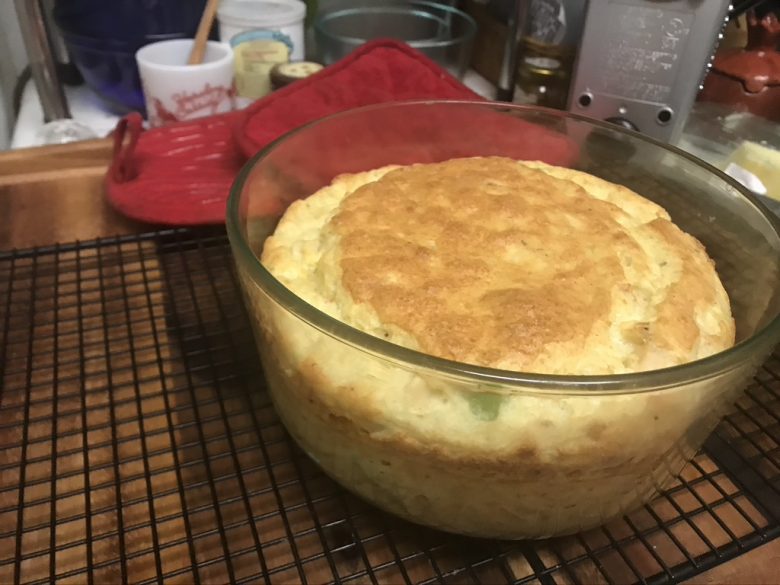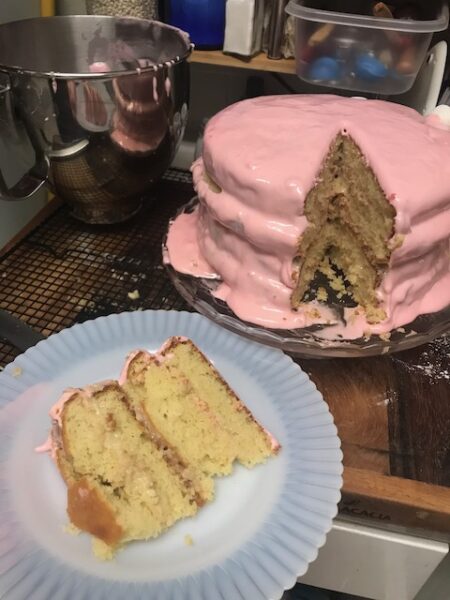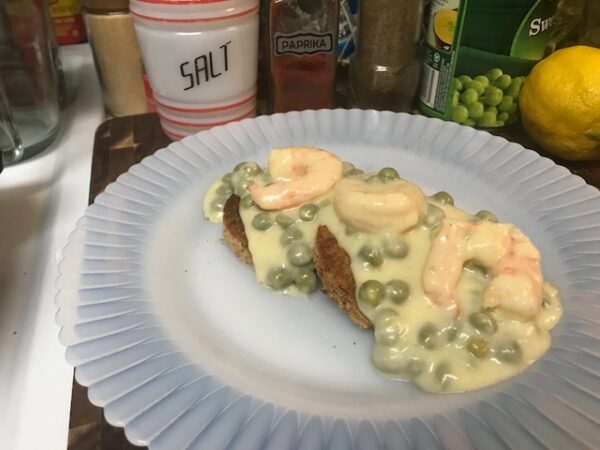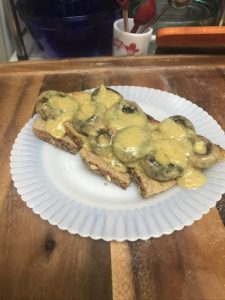From the 1931 Joy of Cooking. “Follow-Up” here means “leftover” (it’s the follow-up to a chicken dinner). Honestly, our modern concept of “leftovers” wasn’t really a thing until widespread refrigeration, and people thought about reusing food very differently before the 50s. For more information, Here is a wonderful article on An Economic History of Leftovers
Given that my prior exposure to the concept of soufflé has been mostly through Doctor Who (Oswin Oswald in Asylum of the Daleks), or as a fancy dessert that is finicky and difficult to cook, I was a fair bit trepidacious. But, Joy of Cooking’s soufflé method is supposed to be foolproof, and a savory soufflé intrigued me enough to try.
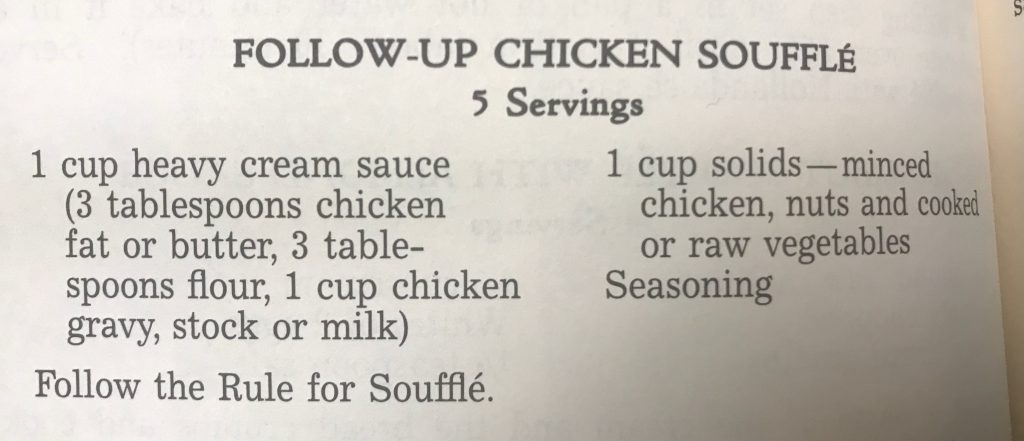
FOLLOW-UP CHICKEN SOUFFLE
5 Servings
1 cup heavy cream sauce (3 tablespoons chicken fat or butter, 3 tablespoons flour, 1 cup chicken gravy, stock, or milk)
1 cup solids – minced chicken, nuts and cooked or raw vegetables
Seasoning
Follow the Rule for Soufflé
If you look closely, you might notice that this recipe lists no eggs. As eggs are rather the entire point of a soufflé, I have assumed this is a mistake. The 1931 Joy of Cooking was self-published and not as well-edited (nor nearly as comprehensive) as the commercially-published 1936 version (and later editions). Luckily, other recipes in the chapter have a pretty consistent white sauce to solids to eggs ratio, so for one cup of white sauce, I used 3 eggs.
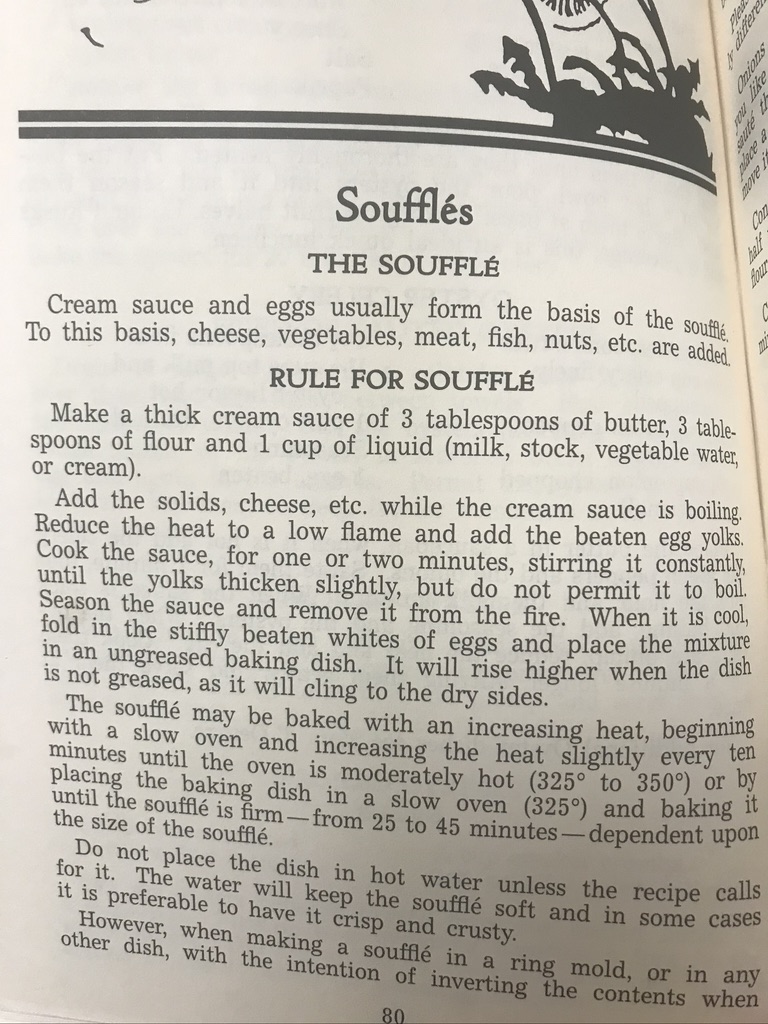
Rule for Soufflé
Make a thick cream sauce of 3 tablespoons butter, 3 tablespoons of flour and 1 cup of liquid (milk, stock, vegetable water, or cream).
Add the solids, cheese, etc. while the cream sauce is boiling. Reduce the heat to a low flame and add the beaten egg yolks. Cool the sauce, for one or two minutes, stirring it constantly, until the yolks thicken it slightly, but do not permit it to boil. Season the sauce and remove it from the fire. When it is cool, fold in the stiffly beaten whites of eggs and place the mixture in an ungreased baking dish. It will rise higher when the dish is not greased, as it will cling to the dry sides.
The soufflé may be baked in an increasing heat, beginning with a slow oven and increasing the heat very slightly every ten minutes until the oven is moderately hot (325º to 350º) or by placing the baking dish in a slow oven (325º) and baking it until the soufflé is film – from 25 to 45 minutes – dependant upon the size of the soufflé.
Do not place the dish in hot water unless the recipe calls for it. The water will keep the soufflé soft and in some cases it is preferable to have it crispy and crusty.
I used breast meat from a Costco rotisserie chicken, leftover duck fat, chicken broth, and a bit of leftover green bell pepper and onion. For period-appropriate seasonings, I added celery salt, paprika, pepper, and salt.
The mixing bowl is real borosilicate glass (Pyrex), so I can stick the bowl directly into the oven. Pyrex glass bakeware is actually period. The recipe did not actually say how long to cook, so I removed it when it started to smell like cooked egg. It deflated a bit when I cut into it, but was still fluffy to eat.
This was absolutely amazing! Definitely a delicious use of leftovers. Between the chicken broth and the duck fat, the whole thing tastes intensely of chicken. Imagine all the flavor of chicken pot pie, except it’s a fluffy egg texture. My partner ate two servings. Delicious and decadent; it uses up leftover odds and ends, and I could still serve this to guests I want to impress. I absolutely recommend this.
…Holy [explitive], I made a soufflé. I am Soufflé Girl

